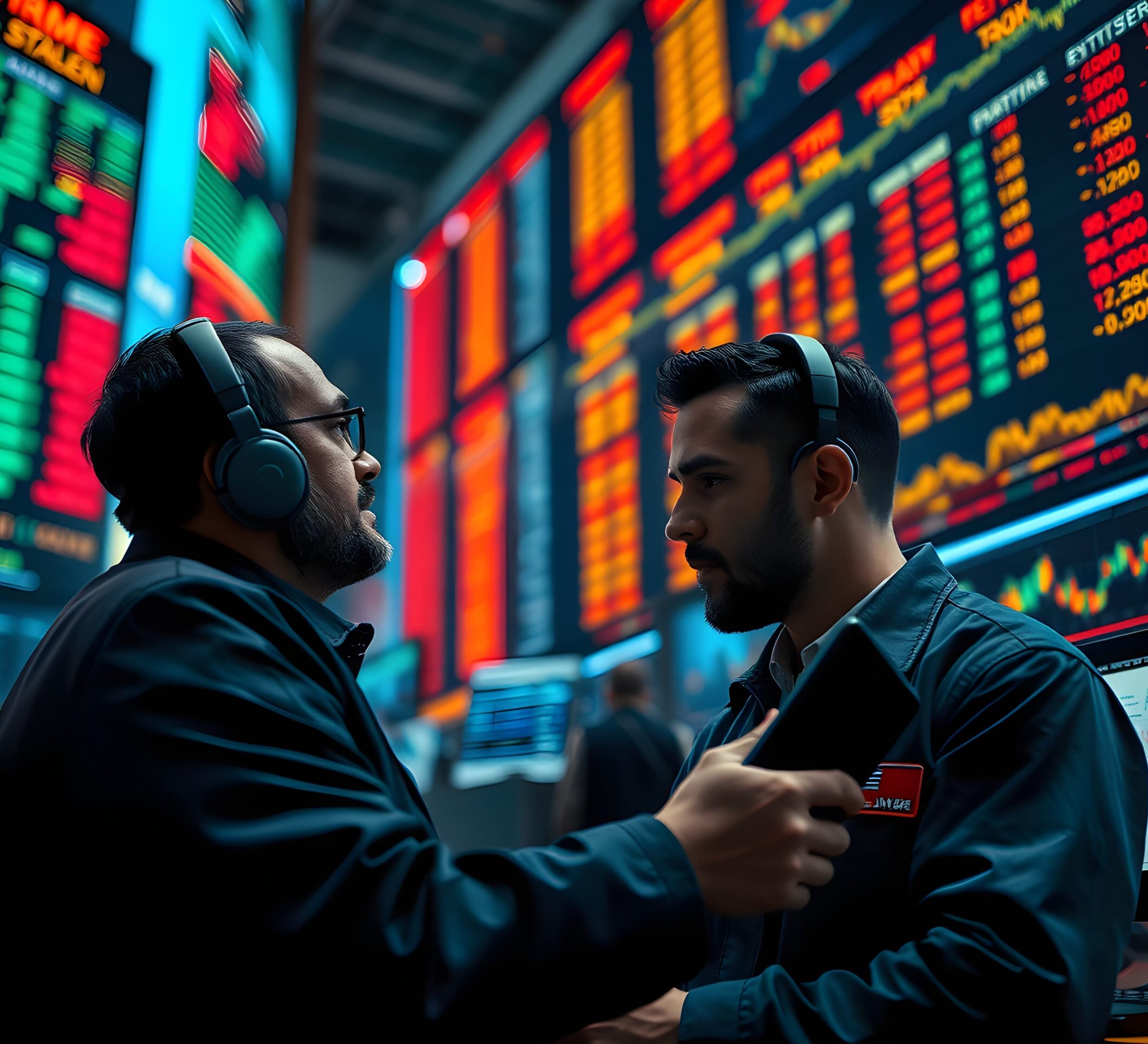
Overview of S&P 500 Performance on Christmas Eve 2024
The S&P 500 index saw a notable uptick during the abbreviated Christmas Eve trading session on December 24, 2024. Despite the reduced trading hours, the index demonstrated a positive movement, closing up 0.36% to settle at 5,995.75 points. The performance marked a continuation of recent positive momentum in the markets, fueled by optimism surrounding inflation data, the Federal Reserve’s approach to interest rates, and the overall health of the U.S. economy. This article delves into the factors that contributed to the climb of the S&P 500, examining market sentiment, sector performances, and the broader economic context.
Shortened Trading Sessions and Market Behavior
Understanding Shortened Trading Hours
Shortened trading sessions like the one on Christmas Eve are not unusual for U.S. stock markets. These typically occur during major holidays such as Christmas, Thanksgiving, and New Year’s Day. Markets often close early, typically at 1:00 PM ET, to give traders and investors a break. While the reduced trading hours mean less market activity, the impact on overall stock prices can still be significant.
Market Liquidity in Shortened Sessions
During these truncated sessions, market liquidity tends to decrease. The reduced trading volume often results in more significant price swings, as fewer buy and sell orders can lead to wider bid-ask spreads. However, despite these dynamics, the S&P 500 managed to maintain its positive trajectory during this Christmas Eve session, indicating a sense of stability in the market.
Investor Sentiment and Holiday Trading Trends
Investors often exhibit different behaviors during holiday periods, marked by a tendency to be more cautious but also more optimistic. Historically, U.S. stock markets have tended to perform well during the final days of the year, leading to a phenomenon known as the “Santa Claus Rally.” This effect is driven by factors like institutional investors adjusting their portfolios, the holiday spirit encouraging optimism, and low trading volumes amplifying price movements.
The Role of Retail Investors
Retail investors also contribute to market dynamics during holiday trading. With many taking time off for the holidays, retail investors may not be as active in the market, leaving institutional investors with a larger influence. However, some retail investors take advantage of low-volume periods to make last-minute trades or portfolio adjustments.
Volatility During Holiday Sessions
Volatility is often more pronounced in shorter trading sessions due to the lower number of trades, making stock prices more sensitive to large buy or sell orders. The Christmas Eve session saw relatively muted volatility, though, with the S&P 500 climbing gradually throughout the afternoon. This indicates a degree of stability and confidence among market participants.
Key Factors Influencing the S&P 500’s Climb
Economic Data and Market Reactions
A key contributor to the S&P 500’s climb on Christmas Eve was the positive economic data released earlier in the month. Reports indicating that inflation is cooling off helped boost investor confidence. This data suggested that the Federal Reserve’s tightening measures may have begun to take effect, reducing fears of aggressive rate hikes and signaling a potential slowdown in interest rate increases.
Federal Reserve’s Impact on the Market
The Federal Reserve’s stance on interest rates has been a major factor influencing market behavior throughout 2024. The central bank’s indications that it may slow down its pace of rate hikes next year have been welcomed by investors. Lower interest rates are generally seen as favorable for stocks, as they lower the cost of borrowing and encourage investment in equities rather than safer bonds.
Sector Performances: Technology and Consumer Discretionary
Technology stocks played a significant role in the S&P 500’s climb during the holiday session. Companies like Nvidia and Broadcom, major players in the semiconductor industry, saw significant gains. In addition, the consumer discretionary sector showed strength, with companies in the retail and automotive sectors benefiting from positive holiday sales expectations.
Energy and Financial Sectors
While the technology and consumer discretionary sectors led the way, other sectors like energy and financials also saw minor gains. The energy sector benefited from stability in oil prices, while the financial sector found support from expectations of steady interest rates. Both sectors, however, experienced more muted gains compared to the tech sector.
The Global Market Context
The S&P 500’s rise wasn’t just driven by domestic factors; global market conditions also played a role. Positive global economic indicators and strong earnings from international companies contributed to a broader sense of optimism in the financial markets. With the global economy stabilizing, investors have become more willing to take on risk, contributing to the overall bullish sentiment.
Corporate Earnings and Guidance
The latest round of corporate earnings reports and guidance from major companies has been largely positive. Investors have been encouraged by the results of many large-cap companies in the S&P 500, which have exceeded earnings expectations. The combination of strong corporate performance and positive economic data has fostered a favorable environment for stock growth.
Investor Optimism and the Santa Claus Rally
As mentioned earlier, the “Santa Claus Rally” is a well-known phenomenon where the stock market typically sees gains in the final week of December. This rally is often attributed to a combination of factors, including investor optimism, holiday spending, and portfolio rebalancing. The S&P 500’s performance on Christmas Eve is in line with this historical trend, contributing to the general optimism surrounding the market during the holiday season.
Broader Economic Trends and Their Impact on the S&P 500
Inflation Trends and Economic Recovery
Inflation has been a significant concern for markets over the past year, but recent data has shown signs of cooling. Inflation reports for November 2024 revealed that the Consumer Price Index (CPI) rose at a slower pace than expected, offering some relief to investors. With inflation showing signs of moderation, the market has been reacting positively, leading to the S&P 500’s rise.
The Fed’s Strategy: Soft Landing or Recession?
As the Federal Reserve continues to manage inflation through interest rate hikes, there is growing speculation about whether the U.S. economy will experience a “soft landing” or slip into a recession. While many economists are predicting a slowdown in economic activity, the current data suggests that a severe recession may be avoidable. The Fed’s careful approach to rate hikes has been instrumental in maintaining investor confidence.
The Labor Market and Consumer Spending
The strength of the labor market is another critical factor supporting the economy and the stock market. Unemployment rates have remained near historic lows, and consumer spending continues to drive economic growth. This resilience in the labor market has contributed to the optimistic outlook for 2025, bolstering the performance of the S&P 500.
The Impact of Global Trade
Global trade dynamics have also influenced the S&P 500’s performance. While trade tensions with major economic powers like China and the EU have fluctuated, recent trade negotiations and agreements have helped stabilize global markets. The easing of supply chain disruptions has also contributed to smoother market conditions, benefiting U.S. companies that rely on international trade.
Corporate Tax Cuts and Government Stimulus
Corporate tax cuts and government stimulus packages in recent years have contributed to a favorable environment for business growth. These policies have allowed companies to invest in growth initiatives, hire more employees, and boost earnings. Investors have reacted positively to the long-term benefits of these policies, supporting the market’s upward movement.
Technological Innovation and Stock Growth
Technology remains a primary driver of the U.S. economy and stock market. The continuing growth of the technology sector, particularly in areas like artificial intelligence, cloud computing, and semiconductor manufacturing, has driven the performance of major stocks in the S&P 500. This sector has been a key factor in the index’s recent rise.
Global Economic Stabilization
Globally, economies are showing signs of stabilization following the disruptions caused by the COVID-19 pandemic and geopolitical tensions. As countries recover and global supply chains normalize, international trade and investment opportunities are expanding. This global economic stability has supported the U.S. stock market’s performance, including the S&P 500.
Market Outlook for the End of 2024 and Beyond
2025 Market Predictions
Looking ahead to 2025, many analysts predict continued growth for the stock market, though at a slower pace compared to the gains seen in 2024. A more balanced approach by the Federal Reserve, combined with continued economic recovery, could lead to stable market conditions. While there are still risks, such as potential geopolitical tensions and unpredictable economic shocks, the outlook for the S&P 500 remains positive.
The Role of Consumer Spending in 2025
Consumer spending is expected to remain a major driver of economic growth in 2025. With a strong labor market and continued wage growth, consumers are likely to continue fueling demand for goods and services. This will be especially important for consumer-driven sectors like retail, hospitality, and discretionary spending.
The Federal Reserve’s Plans for 2025
The Federal Reserve’s approach to interest rates will continue to be a central factor influencing the stock market. While further rate hikes are possible, many investors expect the Fed to adopt a more cautious stance in 2025, allowing for economic growth without exacerbating inflationary pressures. This could contribute to a favorable environment for stocks.
Global Economic Trends and Risks
Global risks, such as potential trade disruptions, rising energy prices, or political instability, could have an impact on the stock market. However, overall global economic growth is expected to support the U.S. market, including the S&P 500.
FAQ Section
1. Why did the S&P 500 climb on Christmas Eve? The S&P 500 rose due to positive economic data, strong corporate earnings, and investor optimism. Despite the shortened trading session, the market was buoyed by positive inflation news and Fed expectations.
2. What is a shortened trading session? A shortened trading session occurs when the stock market operates for fewer hours than usual. This typically happens around major holidays, such as Christmas Eve.
3. How does inflation affect the stock market? Inflation can lead to higher interest rates, which can slow down economic growth and negatively impact stock prices. However, if inflation slows, it can have the opposite effect, helping stocks rise.
4. What is the “Santa Claus Rally”? The “Santa Claus Rally” refers to the tendency for stock prices to rise during the last week of December, driven by factors like optimism, portfolio rebalancing, and holiday spending.
Feel free to check out our other website at : https://synergypublish.com


